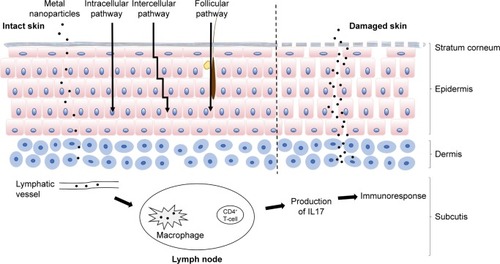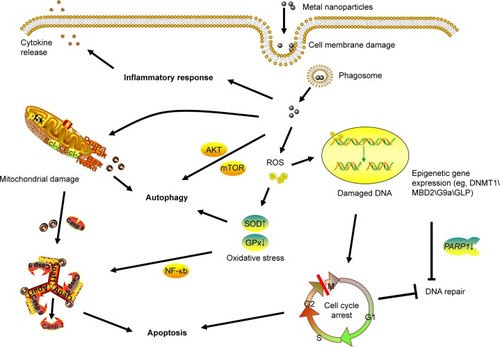Figures & data
Table 1 Skin absorption of metallic NPs
Figure 1 Skin penetration of metal NPs.
Notes: Three main possible skin-penetration pathways are illustrated: the intracellular pathway, intercellular pathway, and follicular pathway. Metal NPs may penetrate the stratum corneum in healthy skin. In damaged skin, more NPs may penetrate the epidermis and dermis. They may move to the lymph modes and be engulfed by macrophages. During penetration, metal NPs release metal ions, which induce metal ion-specific CD4+ T-cell and IL17-mediated immunoreactions.
Abbreviation: NPs, nanoparticles.

Table 2 Risk evaluation of metal NPs in skin cells
Figure 2 Possible toxic mechanisms of metal NPs in HaCaT cells.
Notes: Metal NPs induce ROS explosion intracellularly, and the accumulation of NPs might result in the following effects: cell-cycle arrest, which is associated with DNA damage and chromatin structure remodeling caused by oxidative stress (G2/M cell-cycle arrest prevents DNA-damaged cells from entering mitosis to repair DNA and induce apoptosis); expression of epigenetic related genes, resulting in modifications of chromatin structure and alterations in gene expression; and mitochondrial damage and alteration of apoptosis and autophagy-related genes, which lead to autophagy and mitochondrial apoptosis.
Abbreviations: NPs, nanoparticles; ROS, reactive oxygen species.

